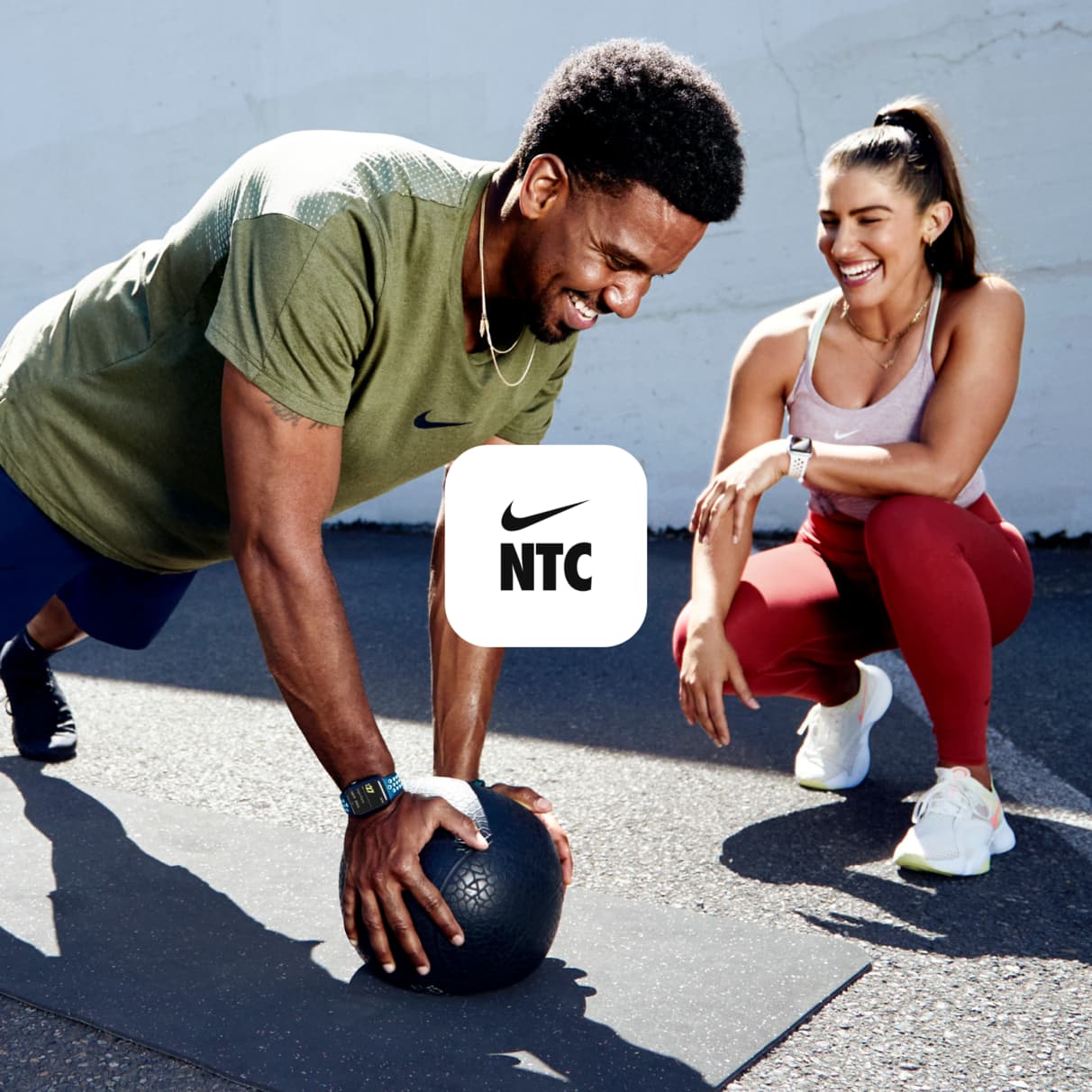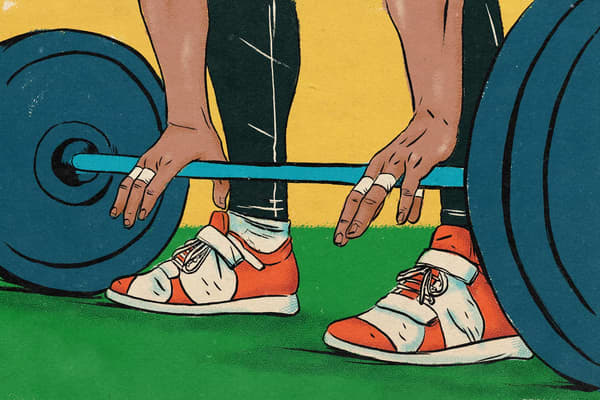Trying to Build Lean Muscle? Follow This Advice
Sport & Activity
Learn the diet and exercise guidelines you should follow if you want to change your body composition and tone up.

Is your current diet and workout plan giving you the results you want? Perhaps you set a goal to change your body composition, lose fat or gain lean muscle, and are struggling to see progress. If that sounds like you, it's probably time to make some tweaks to your diet and training plan.
There are specific guidelines provided by exercise physiologists for building lean muscle. If you structure your programme with their evidence-based guidelines, you're more likely to meet your goals.
How to Build Lean Muscle with Training
To build muscle mass effectively, you should understand some key resistance training terms such as sets, reps, and one rep max or 1RM. Once you understand these terms, you can put together your training plan for building lean muscle.
1.Identify the Appropriate Number of Sets and Reps

The number of repetitions—or reps—you do will vary based on your workout training goal. One rep is a single execution of a particular exercise. A set is multiple repetitions of the same exercise.
Training organisations including the American Council on Exercise (ACE) and the National Academy of Sports Medicine (NASM) provide very specific guidelines for sets and reps based on different strength-related goals.
For instance, people who want to increase their muscular endurance are advised to do two to four sets of each exercise with about eight to 12 reps per set as part of their workout. Muscular endurance is the ability to produce and sustain muscle force over an extended period of time.
To build muscle mass, however, the recommendations are slightly different. Building muscle or increasing muscle size is called muscle hypertrophy by trainers and exercise physiologists. To optimise muscular hypertrophy, NASM recommends that you perform three to six sets of six to 12 reps per exercise. You should lift 75–85 percent of your one rep max or 1RM to help build muscle mass.
One Rep Max (1RM)
Your one rep max (1RM) is the maximum amount of weight you can lift to complete one repetition, according to ACE. There are different ways to determine the number.
An experienced weightlifter may perform a 1RM test in a gym, usually with the help of a qualified trainer. During the test (and after warming up) you challenge yourself to lift as much weight as possible. Since the test involves some risk, it is helpful to have a spotter or trainer available. For less experienced lifters, trainers can also predict a 1RM, although the predictions tend to be less accurate.
Your one rep max will vary for different muscle groups throughout the body. For instance, your one rep max for a squat is likely to be much higher than your 1RM for a biceps curl. Also, your 1RM will change as you get stronger. So you may need to retest periodically.
Don't miss 7 Muscle Groups You Activate When Running!2.Establish a Training Plan to Build Lean Muscle

Once you know your one rep max for each exercise or major muscle group, you can choose exercises to assemble your muscle-building plan using NASM guidelines as part of your workout. The number of exercises you choose depends on your fitness level, but the organisation recommends that athletes who want to build muscle size try to do two to four exercises per body part.
For example, if you want to build muscle in your upper body, you might start by doing 3 x 6 (three sets of six reps) of these exercises:- Chest press
- Chest fly
- Push-up
- Lat pull-down
- Pull-up
- Shoulder press
- Lateral raise
This workout plan would meet the recommendations for building large muscle (hypertrophy) in the chest, back and shoulders. As you get stronger, add reps first (to a maximum of 12) then add sets (to a max of six).
You also need to decide how often you want to do your workout. Researchers have established that overall training volume matters more than frequency. Training volume refers to the combined workload of your sets, reps and level of intensity or resistance.
But even though total training volume is important, some published studies suggest that a higher training frequency (three or more times per week) may have a slight advantage when it comes to muscle hypertrophy.
The most important factor in setting up your best weight-training schedule is to allow adequate recovery time. Building lean muscle requires that the rate of muscle protein breakdown (MPB) is lower than the rate of muscle protein synthesis (MPS).
MPB happens during your workout when muscle fibres are stressed and damaged. During recovery, muscle protein synthesis occurs. During this phase, your muscle fibres rebuild with the help of amino acids, the building blocks of protein. Without adequate rest, this phase can't happen effectively. A proper diet is also necessary to optimise this phase.3.Follow a Diet That Will Help Your Muscles Recover Post-Workout

To make the most of muscle protein synthesis during recovery, you need to supply your muscles with quality protein. According to the International Society of Sports Nutrition (ISSN), athletes should consume 1.4–2.0 grams of protein per kg of body weight per day. That's about 0.64–0.91 grams of protein per pound.
You should also make sure your protein sources include essential amino acids, particularly leucine. Essential amino acids are those that are not made naturally by the body, so they must be consumed in the diet. Leucine has been identified as being a particularly important compound for muscle protein synthesis.
Foods that are high in leucine include eggs, almonds, chickpeas, lentils, salmon and peanuts. Both soy and whey protein powder also supply leucine. Other foods that provide essential amino acids include turkey, fish, cottage cheese, quinoa and legumes.
According to ISSN, skeletal muscle is sensitised to the effects of protein and amino acids for up to 24 hours after your strength-training workout. So including high-quality protein in your diet in this window will help you optimise muscle hypertrophy.
But timing your protein intake does not have to be an exact science. While some athletes try to get protein (in the form of a shake or bar) in the 30-minute window after exercise, this practice may not be necessary. More current research suggests that focusing on overall diet quality and getting adequate nutrition throughout the day is more important.
To build a complete meal plan to support your resistance training plan, you should also include quality carbs and fats in your diet. Carbohydrates such as whole grains, fruits and vegetables supply your body with energy and fat (such as the fat found in avocado, nuts, seeds and plant-based oils), support healthy cells and promote satiety.

Frequently asked questions about building lean muscle
Do cardio activities, such as running, help build lean muscle?
Can I lose fat while building muscle?
A muscle-building diet requires a calorie surplus. That is, you need to consume more calories than you burn each day. A weight-loss diet requires that you consume fewer calories than you burn each day, resulting in a calorie deficit. For this reason, it is very hard to lose fat while building muscle.
Should I take a supplement to gain muscle?
Experts generally recommend that you get high-quality calories from a balanced diet. Foods that provide lean protein, fibre-rich carbohydrates and healthy fats can also contribute important vitamins and minerals. However, the ISSN suggests that protein supplements can be a practical way to get adequate protein while minimising caloric intake, particularly for athletes who typically complete high volumes of training and want to gain muscle.





